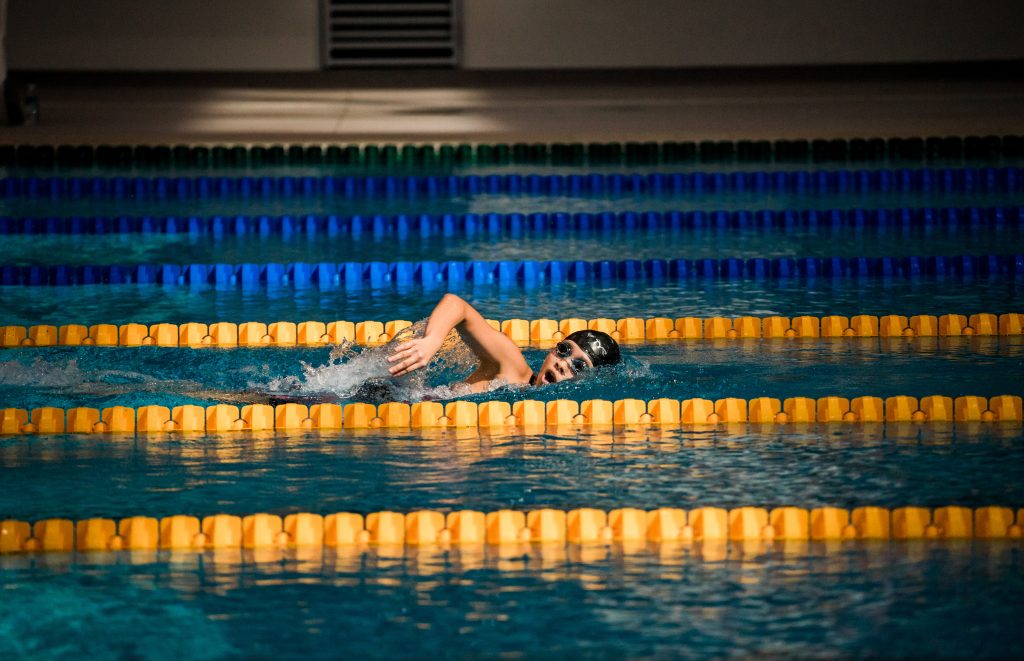Last Updated on October 9, 2024 by Mozam Iqbal
The surgery you got a few days ago made you wonder; can you swim with stitches? Swimming with stitches is not a good idea because you can get them wet, and the water can cause them to reopen. Most people heal quickly after getting stitches, but that doesn’t mean the recovery process is always comfortable.
Your general health and the type of surgery you had will determine the length of your recovery following surgery with stitches. Large incisions can take some time to heal completely – and if you have additional medical problems, you may need even longer.
When the skin breaks, germs can enter the body directly, resulting in infection. Stitches that become infected are usually caused by bacteria, which will cause swelling and tenderness at the wound site.
Continue reading to learn more!
Also check: Waterproof a Tattoo For Swimming
What are Stitches, and How Do They Work?
Stitches are tiny threads that are used to close up wounds. Your body forms a clot to stop the bleeding when you get a cut. The lump comprises platelets, cells that help your blood clot. Once the bleeding has stopped, your body starts to heal the wound by closing it up with stitches.
Stitches help to hold the skin together so that it can heal properly. They also help to prevent infection by keeping bacteria out of the wound. Stitches are usually made from thread that dissolves in the body over time. It means that they do not need to be removed.
It is important to keep the wound clean and dry during this time. You should also avoid picking at or scratching the stitches. If you do this, you could cause the cut to reopen and become infected.
If you have stitches, you should see your doctor if the wound starts to bleed, is painful or swollen, or if you notice any redness or discharge. These could be signs of infection. Once the wound has healed, you will usually have a small scar.
When Can You Swim With Stitches?

If you have had surgery, you may wonder when you can swim with stitches. It depends on the type of surgery you have had, but in general, you shouldn’t go swimming until:
- Your stitches have dissolved.
- Your wound has healed.
- Getting your doctor to approve and confirm that it is safe for you is the only way to go.
- You don’t feel pain from your wound.
If your stitches are dissolvable, they will usually take about a week to disappear. If you have non-dissolvable stitches, they will need to be removed by a doctor before you can go swimming. Either way, ensuring your wound is completely healed before getting in the water is important.
Stitches are usually removed within 4-14 days after surgery, depending on the type of wound. Dissolving absorbable stitches takes longer. After your stitches have been removed or dissolved, your wound should be fully healed. The risk of infection decreases significantly once the injury has healed.
If you’re unsure whether it’s safe for you to swim, always check with your doctor first. They will be able to give you the green light based on your case. Open wounds, plaster casts, and external fixation devices (metal frames that hold your bones in place) should be avoided until your surgeon recommends swimming.
So, when can you swim with stitches? It all depends on your surgery and how your body is healing. Be sure to check with your doctor before getting in the water to be safe.
How Long After Surgery Can You Go Swimming?
Swimming is a great form of exercise that can be enjoyed by people of all ages and levels of fitness. It is also an excellent way to rehabilitate after different types of surgery.
You may need to avoid swimming for some time after surgery, depending on the type of surgery. You should always check with your healthcare professionals before swimming after stitches. Here are some examples of how long after stitches you can swim:
Cornea Transplant
Wear goggles to protect your eyes from impact injuries and avoid diving into the water until you have been advised that it is safe to swim.
Hip Replacement
You can resume your normal activities after 8 to 12 weeks, though some surgeons advise against breaststroke.
Surgical Bypass of the Heart
After three months, you can swim without any problems.
Surgical Treatment for Cataracts
For a period of four to six weeks, you should avoid swimming.
Appendectomy
Swimming is usually safe after the stitches are removed, the wound is healed, and you fully recover (generally at least two weeks).
Being Tattooed
A tattoo’s healing process varies from person to person, but you should give it 2 to 4 weeks before it’s exposed to water.
Listen to your body swimming after surgery, and don’t push yourself too hard. Any new exercise program, including swimming, should be discussed with your doctor. Keeping fit after surgery can be easy with swimming.
The Risks of Swimming With Stitches

If you have stitches, there is always a risk of infection if the wound gets wet. That is why it is important to keep the area clean and dry. You should also avoid swimming in pools or hot tubs until the wound has healed.
1. Stitch Opening Risk
One of the risks associated with swimming with stitches is that the water pressure can cause your stitches to open. It can lead to an infection or further complications.
2. Infection
If your stitches open, you are at risk of developing an infection. This is because bacteria can enter the wound and cause an infection.
3. Cause of Pain
The water can cause pain in the wound if you swim with stitches since the water may irritate the wound and cause irritation.
4. Bleeding
You are also at risk of bleeding if your stitches are open. A blood clot protecting the wound can be washed away by water. It is also possible to develop further complications as a result of bleeding.
Swimming: How to Minimize Infection Risk?
If you do swim with stitches, there are a few things you can do to minimize the risk of infection:
- Dress the wound with a waterproof bandage or dressing. Waterproof plasters are often transparent and flexible. Their durability and breathability provide an extra healing property while covering injuries.
- You can ensure the dressing has a good seal by cleaning the site with antibacterial sprays or wipes, and then thoroughly drying it.
- Avoid swimming in dirty water.
- Don’t swim for too long – keep the duration to a minimum.
- Get out of the water and dry the wound as soon as possible if it gets wet.
After swimming, pat the wound dry with a clean towel or allow it to air dry, spending as little time in the water as possible. Contact your doctor immediately if you notice any wound redness, swelling, or discharge. These could be signs of infection.
Conclusion
Proper wound care can speed up recovery even for minor injuries. Within 48 hours of a stitched cut, new skin will begin to grow within two to three days.
After 24 hours, showering without submerging the wound is safe, but swimming with stitches will delay wound healing. Oceans, lakes, and rivers may also carry bacteria at this point.

